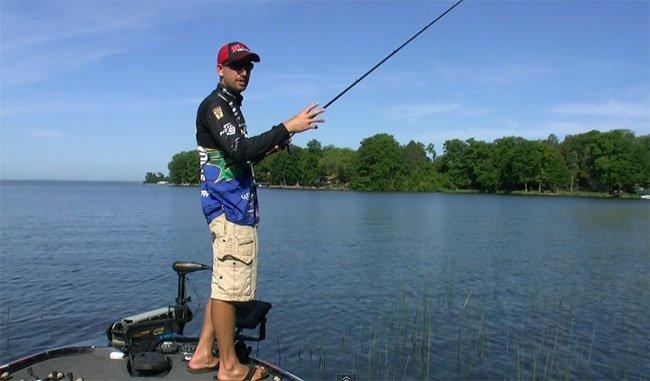.embed-container { position: relative; padding-bottom: 56.25%; height: 0; overflow: hidden; max-width: 100%; } .embed-container iframe, .embed-container object, .embed-container embed { position: absolute; top: 0; left: 0; width: 100%; height: 100%; }
Ott Defoe talks about choosing between a swim jig and pitching jig based on the cover and types of grass he’s fishing. Bass fishing is all about choosing the best tools and presentations that fit the conditions and scenarios you are faced with as anglers.
Video Transcript: For me using a regular jig over a swim jig has got a lot to do with the cover. Ya know if it’s something I actually have to pitch my bait in, and I think the fish are sitting a little bit lower cover or if it’s something I just don’t have a path to bring a bait through. Ya know for me a jig most of the time when I’m flippin’ a jig or pitchin’ a jig it’s a horizontal presentation. Where with a swim jig it’s actually a (I said that wrong). Pitchin’ or flippin’ a jig is a vertical presentation; a swim jig is more of a horizontal presentation. Ya know, so I’ve got to have a path to bring that bait through. Where if ya know I’m flippin’ something it can just be a little bitty hole or I can be punching it into something so. And it’s a little bit of finding out what the fish want ya know, stuff that’s like this more scattered out here you could definitely bring a swim jig through that. But if the fish want something that hits the water and just goes right straight down actually flippin’ a jig is going to be your better bet. That’s kind of my go to anytime you got to let the fish tell you what they want, but if it’s stuff that’s thicker I want a bait that I can pitch in there and let it go straight down, and in clear water like what we’ve got right here those fish can see that bait a long ways away even in heavy cover so don’t think you’re going to be just fishing for a fish that is right there. Those fish will come from 4 or 5 feet away sometimes. Ya know that’s it for me.












